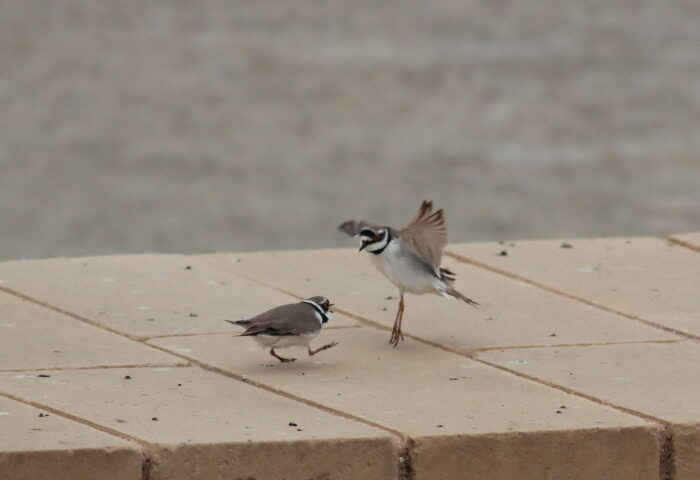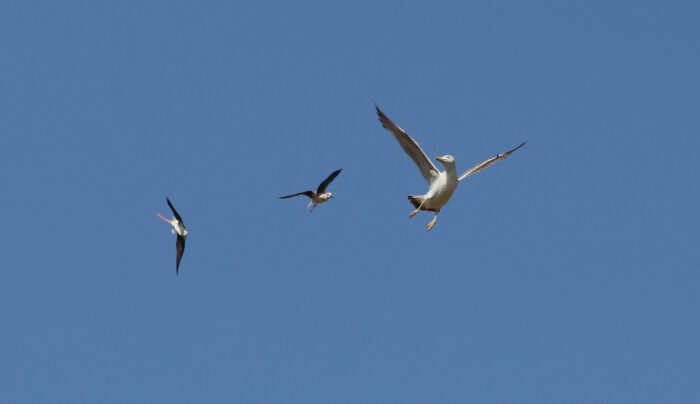In these trying times, social distancing is the name of the game and fortunately this fits very well with birdwatching, which is best done alone or in very small groups of twos and threes. This is so because birds are easily disturbed and scared away by people. So, grab your binoculars, don your boots, and head for the countryside.

For those that are not expert in the art of birding, not knowing the when and where to look for birds, the nature reserves are a safe starting point. During the winter period, the species that one is likely to encounter in the nature reserves managed by BirdLife Malta tend to be quite predictable from week to week, as the birds would be spending the winter in Malta and thus remain in the reserves for a relatively long period.
Some of the birds in fact become rather accustomed to people and are rather tame, allowing close views. A typical example are the gulls, grebes and Common Sandpipers that are at Salina for many weeks or months.
On the other hand, the birds in spring are very different. These are birds migrating north on their way to the European breeding grounds. Once they complete the arduous journey, they would need to find suitable habitat and defend a territory from other prospecting breeders, whilst trying to find a suitable mate to start nest-building.
Hence, when such birds reach our islands, they are in great haste to quickly feed to build up some reserves and continue their migration north. Thus, they are fleeting visitors and rarely remain in one place for any length of time, which makes it that much more important to find the right place to find them. The nature reserves are such places, where birds are guaranteed good feeding grounds in relative safety.

Following last year’s success with the autumn migration campaign, this year BirdLife Malta has launched its second #onthemove campaign to showcase the beauty of the bird migration spectacle, this time in spring. The campaign aims to inspire people to enjoy, care and protect Malta’s birds during the spring migration. Visit https://birdlifemalta.org/onthemove to learn more about the campaign.
Through careful management of the sites, a variety of habitats have been created in the reserves which attract a large variety of bird species. From mid-March, one can find a number of wader species walking along the water’s edge and wading in the shallows looking for tiny invertebrates and small fish. Herons also like these areas, but they are after bigger fish which they ambush or sometimes chase in the shallows.

On the other hand, the wooded areas attract a variety of passerines. These are birds that perch in the trees, which include species of the families of flychatchers, warblers, wagtails, pipits and hirundines. Each family has a peculiar feeding habit which distinguishes it easily.
Whilst flycatchers find an exposed perch and fly to catch insects on the wing, then return to the same perch time and again; wagtails and pipits walk on the ground and search for small insects like flies. Warblers, on the other hand, flit around the leaves picking spiders, worms, caterpillars and any insect they can find, which is markedly different from hirundines (such as the Barn Swallow) and swifts that grace our skies catching numerous flying insects on the wing.

Apart from a staging post for migrants, the nature reserves are also home to a number of breeding birds. As early as mid-March, we expect to find some species engaged in territorial disputes and courtship displays. A typical example are the Little Ringed Plovers. These have become regular breeders in Għadira and hopefully, they will also start breeding in Salina.
At these reserves, these little waders can be observed chasing each other around calling loudly to establish their territory and build their rudimentary nest of pebbles. The same is also true for a larger wader that is unmistakable. The latter is the Black-winged Stilt that has jet black wings and back with a white body and extremely long pink legs. Like the plovers, they are very aggressive and fight any other bird that ventures into their territory. Hopefully this species too will breed at Salina as it has at Għadira in recent years.
Especially in these trying times, it is fortunate that Salina Nature Reserve is designed in such a manner that the outdoor areas can remain open to the public at all times. With easy parking close by, Salina is a must for both novice and expert birders, especially during the spring migration. Moreover, the staff would be only too happy to guide or advise those who would like assistance, maybe to find that elusive bird that might be lurking around but is worth looking for!
By Manuel Mallia, Salina Nature Reserve Manager
